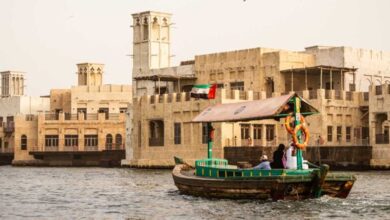The crisis of the shrinking middle class

Today India’s middle class is shrinking, the lower class is expanding and in this way the wealth of Indian billionaires has increased by thirty five percent.
Jyoti Sidana
Today India’s middle class is shrinking, the lower class is expanding and in this way the wealth of Indian billionaires has increased by thirty five percent. That is, India has come to the sixth place in the world after America, China, Germany, Russia and France in terms of wealth of billionaires. Obviously, there was no effect on the affluent class even in the pandemic, but its wealth has only increased.
India is the country with the largest middle class population. And it is equally true that the poorest of the poor are also here. According to a report by the Pew Research Center of America, sixty percent of the people who have gone to the level of poverty worldwide during the Kovid epidemic are Indians. During this period, the middle class population in India has decreased by more than 30 million. Whereas before Corona, the population of the middle class was about ten crores. On the other hand, the poor population has increased by seven and a half crores.
According to a report by Azim Premji University, the rural poverty rate in India has increased to 15 percent. The urban poverty rate has reached about 20 percent. These figures are so frightening that by looking at them, it is easy to predict the future crises and challenges. Due to increasing poverty, a large section of the population is going into the pit of despair. People are being forced to commit suicide due to loss of employment, cut in income, shrinking of deposits, lack of health and other necessary basic resources.
By middle class means those earning from ten to twenty dollars a day (Rupees seven and a half hundred to one and a half thousand rupees). About two-thirds of the households in developing countries have suffered a huge loss in income during the Corona period. This is the first time since the nineties that the world’s middle class population has declined so rapidly. According to a Pew report, the middle class population in the world was thirteen percent in the year 2011, which increased to nineteen percent in 2019. In the context of India, the exclusion of 32 million people from the middle class category during the pandemic is not only a matter of concern, but also a serious challenge before the Indian economy. Because the middle class is also the largest consumer class which plays an important role in ensuring the direction of the market. Therefore the shrinking of the middle class is creating not only economic but also social, cultural and political challenges.
It cannot be denied that except agriculture and electricity, all sectors such as trade, construction, mining, manufacturing sector and private sector have been affected extensively by the pandemic in the year 2021. According to a report, most of the 400 million workers in the unorganized sector in India work in these sectors. A large part of the unorganized sector population is currently facing unemployment. Due to the closure of all sources of income in this period of crisis, this class has either gone into the mouth of poverty or is about to go. According to data from the Center for Monitoring Indian Economy (CMIE), the unemployment rate in the country is currently more than 11 percent.
It is not that the epidemic did not affect the economy of other countries of the world. But the impact of the pandemic on our economy has been more rapid due to less spending on education, health and employment infrastructure. The International Monetary Fund (IMF) has also acknowledged that the Indian economy is estimated to shrink by more than four and a half percent during the pandemic. It is also a fact that even before the pandemic there were crises like widespread economic inequality and recession.
In the year 2018, seventy-three percent of the country’s total wealth was with only one percent of the rich, which was eighty-eight percent in 2017. It is a shocking fact that in a year, fifteen percent of the total wealth and one percent of the wealth reached the lap of the rich. Today India’s middle class is shrinking, the lower class is expanding and in this way the wealth of Indian billionaires has increased by thirty five. That is, India has come to the sixth place in the world after America, China, Germany, Russia and France in terms of wealth of billionaires. Obviously, there was no effect on the affluent class even in the pandemic, but its wealth has only increased. There should be no hesitation in saying that the roots of this inequality lie in our economic policies.
Before Kovid-19, the unemployment rate among women in India was fifteen percent, which increased to eighteen percent. Women who did not lose their jobs also faced a cut of up to eighty-three per cent in their income. That is, the impact of this epidemic deepened the inequality towards women even more. The fact also cannot be ignored that middle class women also contribute financially to the family. Therefore, it is also a big reason that the impact on women’s employment had a huge impact on family income, which has reduced the size of the middle class.
In fact, since the expansion of consumer culture, the character of the middle class has been undergoing drastic changes. Such as domination of individualism, nuclear family, consumption of pretentiousness, longing for higher attainment etc. As a result, the social concerns of the middle class have also changed. And most of all he has become insensitive. An example of this is in front. Supporting the culture of ignoring or silent on aspects like peasant movement, student and teacher movement, political protest, discussion on socio-economic issues have now become an essential part of the personality of the middle class. Perhaps this is the reason why he has kept silence even in the time of the present crisis. Even now on the issue like inflation, there is no movement from the middle class, while it is the most stricken and its biggest threat is also on it.
The question is, what happened after all that the middle class, most affected by the economic policies of the government, has adopted a culture of silence even towards social concerns. He no longer speaks or registers any resistance not only to the incidents happening to others but also to the incidents happening to himself or his own groups/communities. Rising inflation, non-availability of resources, lack of health facilities, unemployment, falling level of education and uncertainty about the future, arbitrary cut in salary, unsafe environment for women and Dalits, increase in violent incidents etc. are such important aspects which cannot be ignored. Maybe, but still the middle class is quiet. This is a serious situation on which the intelligentsia of the society needs to reflect.
In terms of power, the poor population is the most vulnerable group. Every kind of deprivation continues to marginalize him, be it natural disasters, epidemics or economic inequality created by the society. Indeed, poverty needs to be seen in conjunction with inequality. As poverty expands, inequality becomes more complex and this creates obstacles in the process of holistic and inclusive development of the nation.
.





